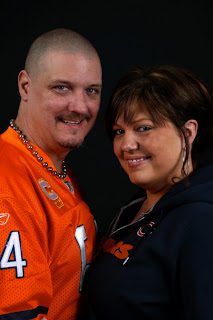One of my past hobbies included picture framing. I thought it would be wise to learn how to do this, because then I would be able to offer framing as a part of the portrait service.
First a picture of a cutie-pie is needed. I used my daughter. Once the picture is edited, I e-mailed it to walgreens to print.
My wife is a huge fan of ikea, so, she picked up a few styles of inexpensive frames. They're always good to have on-hand. As you can see, above, the matting that came with the frame was too small.
A few years ago, I picked up a mat cutter from michael's. They had a 50% off your next purchase coupon, so, I used it for this. I was around 30 bucks, with the coupon, but, I knew I would use it for years.
There are lots of colors available for the mat, so, I kind of stocked up on my favorites.
The angled cutter really takes most of the thinking out of it. After a few measurements, I cut the mat to the size of the frame, then, cut the inside opening 1/4 inch smaller than the picture

You can see how nice the bevel looks because of the cutter.
After taping the picture to the back side of the mat, it's ready to go back into the frame.


If you have any questions, please, ask.





















































